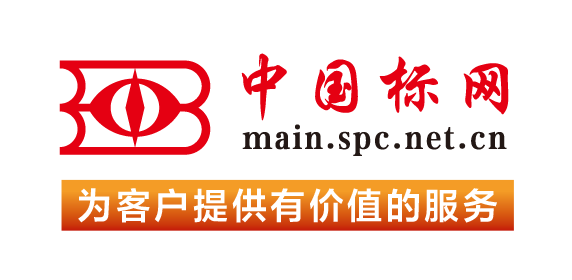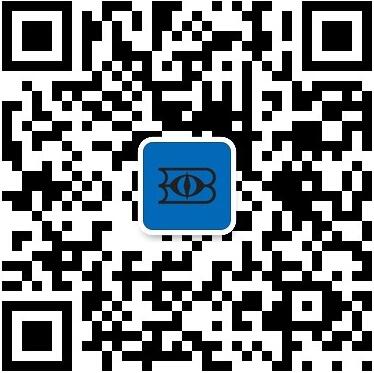This report presents guidelines for the design and usage of Unsigned Items including Remotely Created Checks (RCC). RCC items are a subclass of Unsigned Items, they all share the same characteristic of not bearing the signature of the Payor (also known as the maker or drawer, and is the check writer). RCC items are not created by the Paying bank while Unsigned Items can be created by the Paying bank or its agent. Although Unsigned Items are legitimate payment instruments many of the Unsigned Items being cleared today do not follow any design or usage guidelines. These items cause manual exception processing to complete the clearing process. The intent of this technical report is to provide a single document to originators and processors of Unsigned Items to provide guidance
定价: 910元 / 折扣价: 774 元 加购物车
This technical report (TR) provides a framework for the performance of operational risk assessments on blockchain systems and applications within a distributed network. Operational risks include information technology (IT) and information security (IS) areas. IT includes interoperability, resiliency, accessibility, and software maintenance. IS includes data integrity, confidentiality, authentication, authorization, and accountability (logging capability). This report features some aspects of application risks including data accuracy, version control, backwards compatibility, and other usability functions.
定价: 0元 / 折扣价: 0 元 加购物车
This technical report covers all MICR printing and is intended to improve MICR quality via understanding and uniform interpretation of existing standards and specifications of MICR. The basic elements of MICR are defined in existing American National Standards, which are referenced where appropriate. This document serves as a single reference for the foremost set of elements that will produce quality MICR documents. The purpose of the document is to aid existing MICR printers as well as a new and ever expanding producer group in the production and evaluation of MICR documents, and, to attain broader MICR print specification conformance.
定价: 910元 / 折扣价: 774 元 加购物车
The Technical Report provides some background material and a relevant synopsis of the ANSI X9.100-182 standard. It explains the structure principle behind the mapping approach. And finally, it provides field-by-field data content mapping from the image cash letter file records to the respective XML element layers. The Technical Report focuses on, and restricts itself to, those ANSI X9.100-182 Part 2-1 defined elements and element layers in the XML structure that have equivalence in the ANSI X9.100-187 file record fields. The Technical Report does not provide content detail on ANSI X9.100-182 Part 2-1 XML elements that do not have a direct equivalence in ANSI X9.100-187 file record fields. The guidelines and suggestions in the Technical Report apply to the technical specifications as documented in the ANSI X9.100.187 image cash letter standard, and the technical functionality implemented in the XML schema files that are a component of the ANSI X9.100-182 Part 2-1 standard. A proprietary adoption of the ANSI X9.100-187 standard, or the use of a proprietary rendering of the ANSI X9.100-182 schema files, may render some or all of the guidelines in this Technical Report to be incompatible with the programming processes of the adopter. Although it is possible and even desirable in certain situations to transfer data from the ANSI X9.100-182 XML element structure to equivalent data placement in an ANSI X9.100-187 cash letter file, this Technical Report does not provide specific information to assist with that directional transition. The Technical Report focuses on the transfer from ANSI X9.100-187 to ANSI X9.100-182 Part 2-1 only. However, the information provided in this Technical Report is sufficient for the reader to conclude how to affect a transfer of data from ANSI X9.100-182 Part 2-1 to ANSI X9.100-187.
定价: 546元 / 折扣价: 465 元 加购物车
In the current state of the art in public key cryptography, all methods require, in one way or another, the use of prime numbers as parameters to the various algorithms. This document presents a set of accepted techniques for generating primes. It is intended that ASC X9 standards that require the use of primes will refer to this document, rather than trying to define these techniques on a case-by-case basis. Standards, as they exist today, may differ in the methods they use for parameter generation from those specified in this document. It is anticipated that as each existing ASC X9 standard comes up for its 5-year review, it will be modified to reference this document instead of specifying its own techniques for generating primes. This standard defines methods for generating large prime numbers as needed by public key cryptographic algorithms. It also provides testing methods for testing candidate primes presented by a third party. This standard allows primes to be generated either deterministically or probabilistically, where:?A number shall be accepted as prime when a probabilistic algorithm that declares it to be prime is in error with probability less than 2?00.?A deterministic prime shall be generated using a method that guarantees that it is prime. In addition to algorithms for generating primes, this standard also presents primality certificates for some of the algorithms where it is feasible to do so. The syntax for such certificates is beyond the scope of this document. Primality certificates are never required by this standard. Primality certificates are not needed when a prime is generated and kept in a secure environment that is managed by the party that generated the prime. A requirement placed upon the use of this standard, but out of scope, is as follows:?When a random or pseudo-random number generator is used to generate prime numbers, an ANSI approved random number (or bit) generator (i.e., one that is specified in an ANSI X9 standard) shall be used. This requirement is necessary to ensure security. NOTE鵗he 2-100 failure probability is selected to be sufficiently small that errors are extremely unlikely ever to occur in normal practice. Moreover, even if an error were to occur when one party tests a prime, subsequent tests by the same or other parties would detect the error with overwhelming probability. Furthermore, the 2-100 probability is an upper bound on the worst-case probability that a test declares any non-prime candidate to be prime; not all non-primes may reach this bound, and the probability that a non-prime generated at random passes such a test is much lower. Accordingly, the 2-100 bound is considered appropriate independent of the size of the prime being generated and the intended security level of the cryptosystem in which the prime is to be employed. For high-assurance applications, however, the deterministic methods may nevertheless be preferable.
定价: 910元 / 折扣价: 774 元 加购物车
This DSTU establishes eXtensible Markup Language (XML) data elements, structures, and schemas that describe how various implementations can communicate and interoperate; this in turn establishes interoperable validation of standard-compliant image-survivable check security features without requiring feature-specific software or processing system. This standard, including normative annexes, describes terminology used in validating interoperable image survivable check security features, logical roles involved in validation, printing requirements for check stock and Security Marks, the detailed definition of the Mark Preamble including the Protection Profile, and the list of field codes to be used in the Mark Preamble. Informative annexes describe possible implementations of processes to remotely validate a security mark on a check.
定价: 546元 / 折扣价: 465 元 加购物车
This DSTU establishes eXtensible Markup Language (XML) data elements, structures, and schemas that describe how various implementations can communicate and interoperate; this in turn establishes interoperable validation of standard-compliant image-survivable check security features without requiring feature-specific software or processing system.
定价: 546元 / 折扣价: 465 元 加购物车
This DSTU establishes eXtensible Markup Language (XML) data elements, structures, and schemas that describe how various implementations can communicate and interoperate; this in turn establishes interoperable validation of standard-compliant image-survivable check security features without requiring feature-specific software or processing system.
定价: 546元 / 折扣价: 465 元 加购物车
This standard defines a common set of Application Programming Interface (API) functions to access the WIC benefits on a smart card in the retailer environment; a common method (card discovery mechanism) to identify the issuer of the WIC EBT benefits and the WIC EBT scheme present on the smart card and, an interface to the card reader device that transmits and receives data from the WIC EBT smart card. The reference implementation provided by the WIC authority shall utilize this standard. This standard does not specify the reader driver used by the retailer application but it defines interfaces that may be implemented for the WIC module to access function of the Reader Driver Module (RDM). The use of pseudo Interface Definition Language (IDL) in this standard allows simpler definition of the API functions and their interface in a language independent manner. This standard does not define how WIC-EBT benefits are arranged on the card, the movement of security data or key management.
定价: 546元 / 折扣价: 465 元 加购物车
NOTE: This draft standard is being processed simultaneously as an American National Standard and an International Standard. Specifies requirements for implementations of the C++ programming language. This International Standard also defines C++. Other requirements and relaxations of the first requirement appear at various places within this standard.
定价: 0元 / 折扣价: 0 元 加购物车
Specifies extensions that were considered important to have available in the U.S., prior to publication of the next full revision of the national standard. It addresses extensions related to the Network User Identification (NUI) Selection facility. Implementations conforming to this supplement must conform to X3.100:1989 and the 1988 version of CCITT Recommendation X.25. Supplement to ANSI X3.100-1989
定价: 570元 / 折扣价: 485 元 加购物车
Represents the minimum requirements for mechanical and magnetic interchangeability of thr minicassette between information processing systems, communication systems, and associated equipment using ANSI X3.4:1977, American Standard Code for Information Interchange (ASCII).
定价: 570元 / 折扣价: 485 元 加购物车
 我的标准
我的标准 购物车
购物车 400-168-0010
400-168-0010











 对不起,暂未有相关搜索结果!
对不起,暂未有相关搜索结果!













